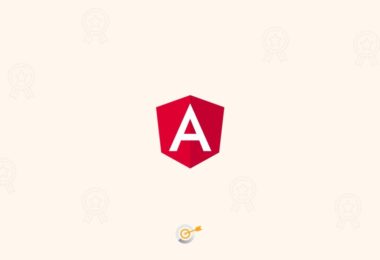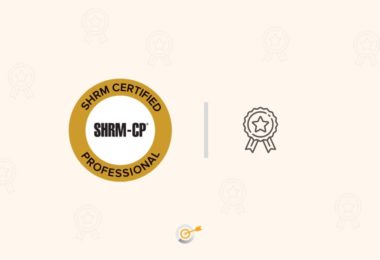Jenkins is useful for any DevOps role. It is a CI/CD role that helps in better executing the code.
About the Jenkins Certification
CloudBees Inc.®(1), offers two certifications for Jenkins engineers:
- The Certified Jenkins Engineer (CJE) exam consists of 60 multiple-choice questions testing knowledge of open-source Jenkins.
- The Certified CloudBees Jenkins Platform Engineer (CCJPE) exam consists of 90 questions: 60 questions testing knowledge of open-source Jenkins and 30 questions testing knowledge of the CloudBees Jenkins Platform.
This exam is comprised of 4 sections:
- Key CI/CD/Jenkins concepts
- Jenkins usage
- Building Continuous Delivery (CD) Pipelines
- CD-as-code best practicesAll questions are based on version 1.625.2 of the Jenkins core.
Unless otherwise specified, all questions are based on an out-of-the-box standard installation of Jenkins, without any additional plugins (“base” Jenkins)
Plugins:
This exam will primarily cover questions about a “base” Jenkins installation, but knowledge of the following plugins will also be covered. Candidates are expected to know the functionality/uses of these plugins but will not be tested on detailed usage:
- Amazon EC2 Plugin
- Build Pipeline Plugin
- CloudBees Docker Build and Publish Plugin
- CloudBees Folders Plugin
- Copy Artifact Plugin
- Credentials Plugin
- Disk Usage Plugin
- Docker Plugin
- Email-ext Plugin
- Fingerprint Plugin
- Git Plugin
- IRC Plugin
- JUnit Plugin
- Jabber Plugin
- Matrix Project Plugin
- NodeLabel Parameter Plugin
- Parameterized Trigger Plugin
- Pipeline Plugin (formerly known as Workflow)
- Promoted Builds Plugin
- Radiator View Plugin
- SMS Notification Plugin
- Script Security Plugin
- Skype Plugin
Exam Content
Key CI/CD/Jenkins Concepts
This topic comprises approximately 27% of the exam. Questions cover the following topics:
-
Continuous Delivery/Continuous Integration Concepts
- Define continuous integration, continuous delivery, continuous deployment
- Difference between CI and CD
- Stages of CI and CD
- Continuous delivery versus continuous deployment• Jobs
What are jobs in Jenkins?
Types of jobs
Scope of jobs
- Builds
What are builds in Jenkins?
What are build steps, triggers, artifacts, and repositories?
Build tools configuration
- Source Code Management
What are source code management systems and how are they used?
- Cloud-based SCMs
- Jenkins changelogs
- Incremental updates v clean check out
- Checking in code
- Infrastructure-as-Code
- Branch and Merge Strategies
Testing
Benefits of testing with Jenkins
Define unit test, smoke test, acceptance test, automated verification/functional tests
- Notifications
Types of notifications in Jenkins
Importance of notifications
- Distributed Builds
What are distributed builds?
Functions of masters and slaves
- Plugins
What are plugins?
What is the plugin manager?
- Jenkins Rest API
How to interact with it
Why use it?
- Security
Authentication versus authorization
Matrix security
Definition of auditing, credentials, and other key security concepts•
- Fingerprints
What are fingerprints?
How do fingerprints work?
- Artifacts
How to use artifacts in Jenkins
Storing artifacts
- Configuration Management (Tools such as Chef, Puppet, etc.)
Elements of software configuration management
Change management policies
Importance of software configuration management
- Using 3rd party tools
How to use 3rd party tools with Jenkins
- Jenkins usage (features and functionality)
This topic comprises approximately 34% of the exam. Questions cover the following topics:
- Jobs
Organizing jobs in Jenkins
Parameterized jobs
Usage of Freestyle/Pipeline/Matrix/Maven/Literate
- Builds
Setting up build steps and triggers
Configuring build tools
Running scripts as part of build steps
- Source Code Management
Polling source code management
Creating hooks
Including version control tags and version information•
Testing
Testing for code coverage
Test reports in Jenkins
Displaying test results
Integrating with test automation tools
Breaking builds
- Notifications
Setup and usage
Email notifications, instant messaging, build radiators
Alarming on notifications
- Distributed Builds
Setting up and running builds in parallel
Setting up and using SSH slaves, JNLP slaves, cloud slaves
Monitoring nodes
- Plugins
Setting up and using Plugin Manager
Finding and configuring required plugins
- CI/CD
Using Pipeline (formerly known as Workflow)
Integrating automated deployment
Release management process
Pipeline stage behavior
Jenkins Rest API
Using REST API to trigger jobs remotely, access job status, create/delete jobs
- Security
Setting up and using security realms
User database, project security, Matrix security
Setting up and using auditing
Setting up and using credentials
- Fingerprints
Fingerprinting jobs shared or copied between jobs
- Artifacts
Copying artifacts
Using artifacts in Jenkins
Artifact retention policy
- Alerts
Making basic updates to jobs and build scripts
Troubleshooting specific problems from build and test failure alerts
- Building Continuous Delivery (CD) Pipelines
This topic comprises approximately 23% of the exam. Questions cover the following topics:
- Pipeline Concepts
Value stream mapping for CD pipelines
Why create a pipeline?
Gates within a CD pipeline
How to protect centralized pipelines when multiple groups use same tools
Definition of binary reuse, automated deployment, multiple environments
Elements of your ideal CI/CD pipeline – tools
Key concepts in building scripts (including security/password, environment information, etc.)
- Upstreams and downstreams
Triggering jobs from other jobs
Setting up the Parameterized Trigger plugin
Upstream/downstream jobs
- Triggering
Triggering Jenkins on code changes
Difference between push and pull
When to use push vs pull
- Pipeline (formerly known as Workflow)
Benefits of Pipeline vs linked jobs
Functionalities offered by Pipeline
How to use Pipeline
Pipeline stage concurrency
- Visualization
Options to visualize jobs’ relationships
When to use various options for visualizing jobs’ relationships
Information offered by a build pipeline view
How to set up build pipeline visualization
- Folders
How to control access to items in Jenkins with folders
Referencing jobs in folders
- Parameters
Setting up test automation in Jenkins against an uploaded executable
Passing parameters between jobs
Identifying parameters and how to use them: file parameter, string parameter°Jenkins CLI parameters
- Promotions
Promotion of a job
Why promote jobs?
How to use the Promoted Builds plugin
- CD Metrics
KPIs/metrics for CI/CD
Determining how many builds failed, succeeded
Determining how long a build takes
Determining how often code is checked-in
How to use metrics/KPIs
- Notifications
How to radiate information on CD pipelines to teams
- CD-as-Code Best Practices
This topic comprises approximately 16% of the exam. Questions cover the following topics:
- Distributed builds architecture
- Fungible (replaceable) slaves
- Master-slave connectors and protocol
- Tool installations on slaves
- Cloud slaves
- Containerization
- Traceability
- High availability
- Automatic repository builds
Salary for Certified Jenkins Engineer
A mid-career Development Operations (DevOps) Engineer with 5-9 years of experience earns an average total compensation of $99,621. The range for DevOps engineers with CJE certification is $64000 and $134000
Where to Find Online Resources for the Certification
CloudBees and Jenkins portals offer the practice exam and the training required. In addition to that, Linux Academy and Udemy also offer the certification.
[ Read: How to Get into Robotics Engineer Jobs / What it Takes to Become a Robotic Engineers ]





